Choosing the Intel variant of this machine is not recommended due to an imbalanced CPU-GPU combination. Unless your preference is vibrant visuals for spreadsheet tasks, the Intel AM08 illustrates how Intel’s approach with 11th Gen mobile processors deviated from the norm.
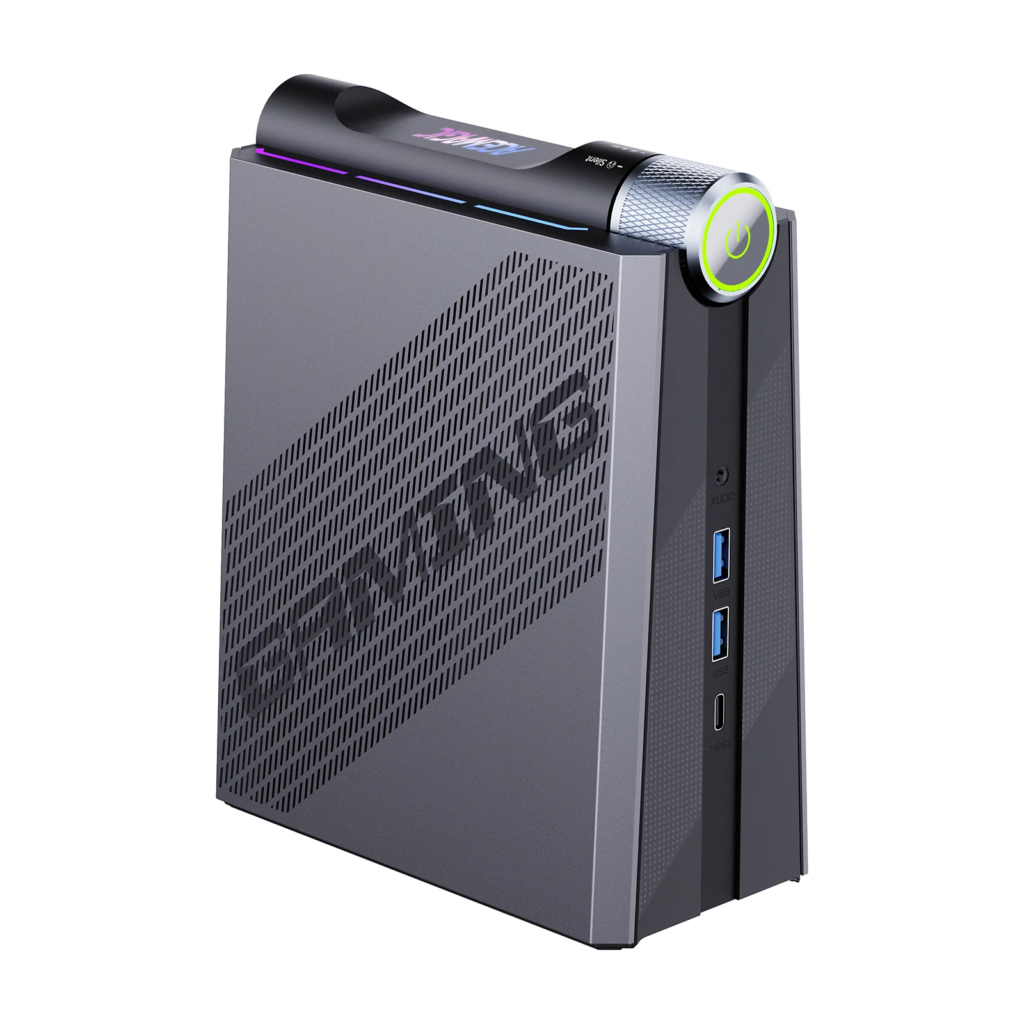
NewForTech Opinion:
Pros:
- Powerful processor
- Convenient internal access
- Vibrant LED lighting
- An AMD alternative is available
Cons:
- Limited to Gigabit Ethernet
- GPU performance falls short for this CPU
ACEMAGIC AD08: 30-Second Review
ACEMAGIC AD08 Specifications
Here’s the Geekom AS 5 configuration for review:
- CPU: Intel Core i9-11900H
- GPU: Intel UHD Graphics for 11th Gen
- RAM: 16GB DDR4 RAM (Expandable to 64GB)
- Storage: 512GB NVMe SSD (M.2 2280)
- Ports: 4x USB 3.2 Gen2 Type-A, 1x USB 3.2 Gen2 Type-C (10Mbit), 2x HDMI 2.0, 1x universal audio jack
- Connectivity: Dual-Band WiFi 6, 1x Gigabit LAN adapter, Bluetooth 5.2
- Dimensions: 154.3 x 77.8 x 77.8 mm (W x D x H)
- Pre-installed OS: Licensed Windows 11 Pro
- Accessories: PSU Adapter 19V/6.3A, HDMI cable
The ACEMAGIC AD08 shares a similar case design with its predecessor, the AMR5. It’s relatively large for a Mini PC and designed for desktop use, not ideal for portability. However, it has hidden features.
It offers two variants: the AMD-powered AM08 Pro model with a Ryzen 6900HX CPU and Radeon 680M, and the one we’re reviewing, built around an Intel Core i9-11900H CPU and UHD Graphics for 11th Gen.
After testing both platforms on other machines, we strongly advise against the Intel AM08 due to its lower performance and higher cost compared to the AMD platform.
The Intel AM08 comes with 16GB of DDR4 RAM and a 512GB SSD pre-installed, while the AMD AM08 Pro is available as a ‘barebones’ kit where you provide your own memory and storage, or with 32GB of RAM and 512GB of storage.
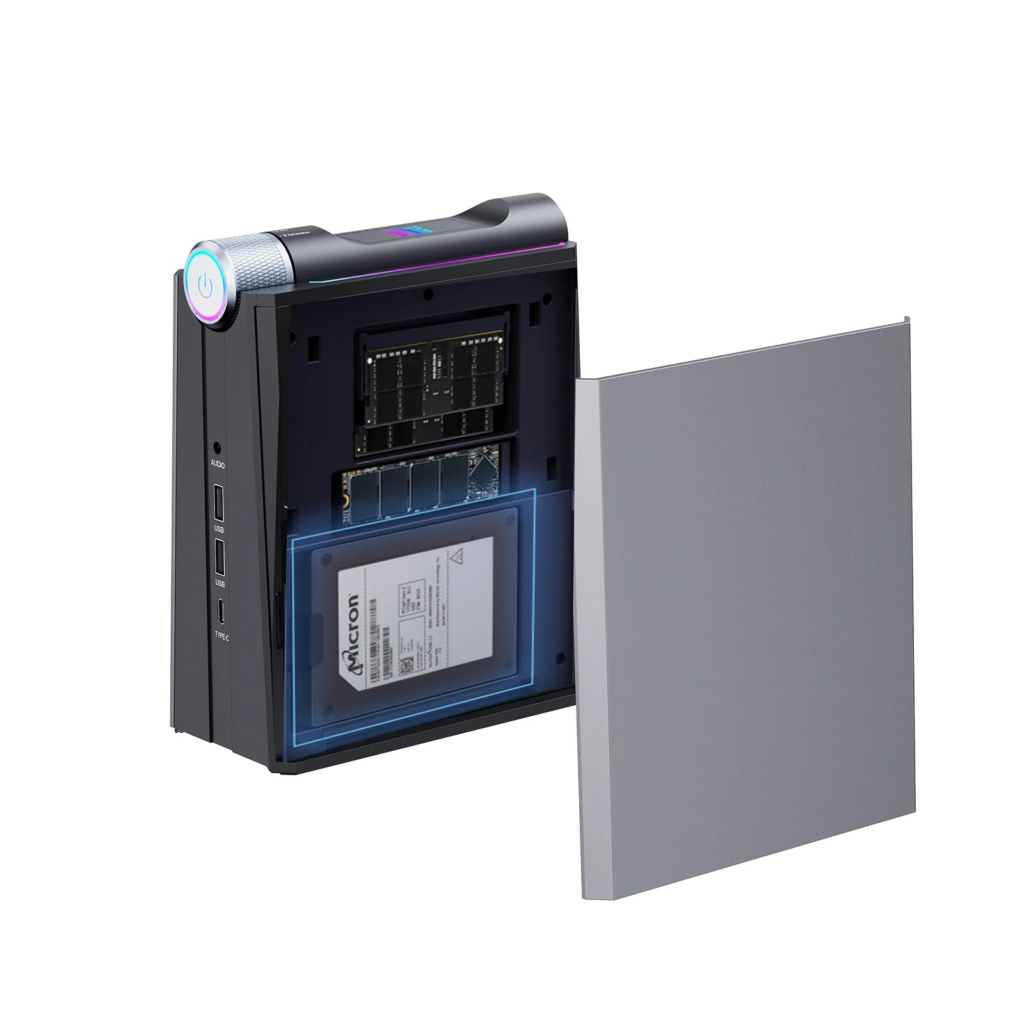
Both models are easy-to-set-up Windows 11 Pro machines with abundant USB ports and dual display support.
While it could serve well for media presentations and general office tasks, it’s worth noting that Acemagic labels the AM08 Pro as ‘gaming,’ a claim we don’t endorse. The Intel AD08 uses the term ‘Mighty,’ which is more ambiguous.
Neither design allows mounting on the rear of a monitor.
Despite its Core-i9 processor, this machine is outperformed by newer Core-i7 processors and AMD Ryzen 5 series machines in reality.
ACEMAGIC AD08: Price and Availability
- Price: $671
- Availability: Now available
- Where to Buy: Directly from Acemagic
Currently, only customers in the United States can purchase the reviewed AD08 model. However, the AMD-powered AM08 Pro is available both in the USA and Europe.
The $671 price of the AD08 includes 16GB of RAM and 512GB of storage, and it’s the only configuration available for this model.
In contrast, the AMD Ryzen-based AM08 is priced at only $559, but it’s currently available in a ‘barebones’ configuration in the USA, where customers need to provide their own RAM and storage. In Germany, there’s another configuration with 32GB RAM and 512GB storage, priced at €644.25 or £551.30 in the UK.
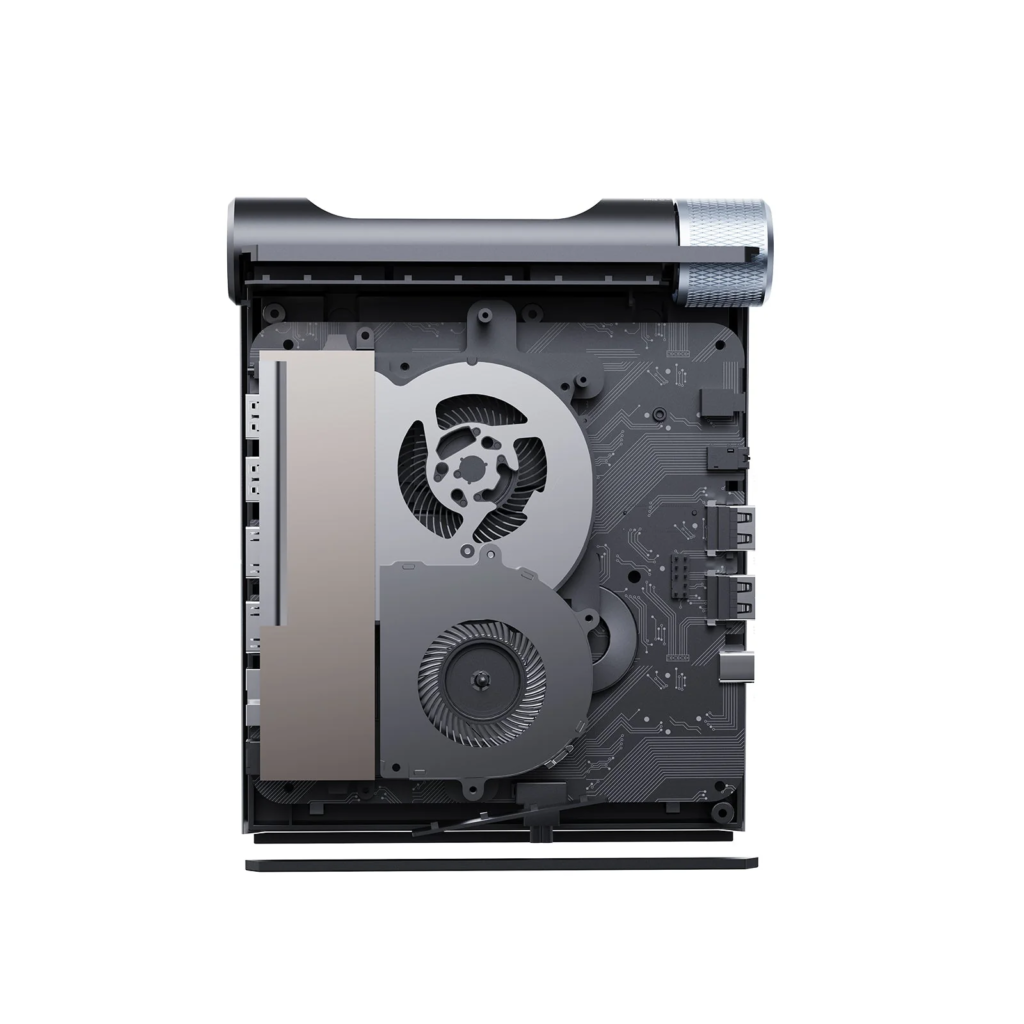
Considering these price points, the AD08 doesn’t appear to offer as good a value as the AM08 Pro, which provides better performance at a lower cost.
Value: 3 / 5
ACEMAGIC AD08: Design
- Similar to the AMR5
- Easy Access
- Illuminated memory
The design of this Mini PC sets it apart from the classic NUC designs we’ve seen elsewhere, except for the Acemagic AMR5. The AM08 is specifically designed for desktop placement and isn’t meant to be attached to VESA holes on a monitor. It’s also meant to stand upright rather than be placed on its side.
At the top, there’s a knurled power button with three settings for Silent, Performance, and Auto operations. Throughout our testing, we operated it in Performance mode. Although power saving might seem unnecessary for a non-laptop machine, these modes can reduce fan noise.
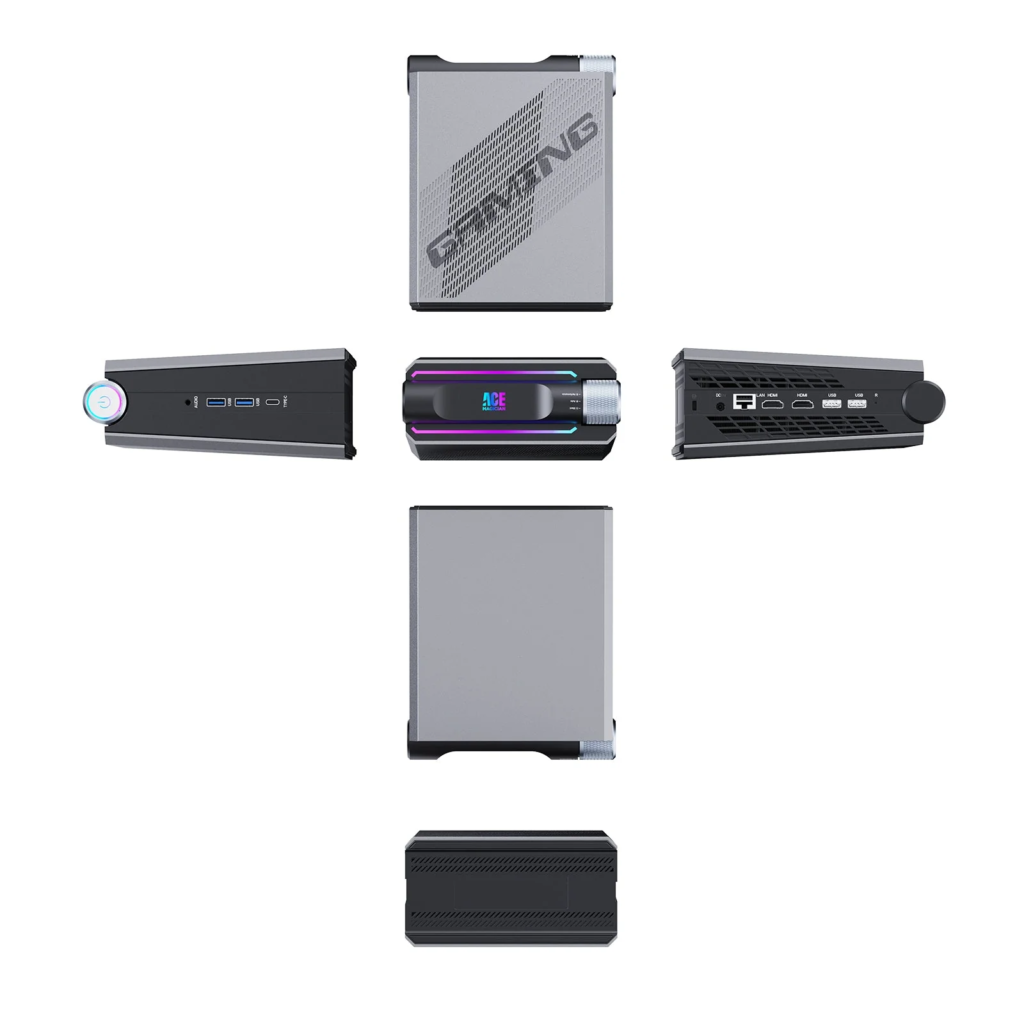
Due to this layout, all the ports are located on the front and back. The front features three USB ports, and the rear includes two USB ports, along with an audio jack. Additionally, on the back, you’ll find two HDMI 2.0 display outputs, Gigabit Ethernet, a reset hole, and a security slot.
Given that many mini-systems now come with 2.5GbE LAN, the inclusion of only gigabit LAN is somewhat disappointing.
Similar to the AMR5, this PC lacks an SD Card slot, but all the USB ports on this model are USB 3.2 Gen2.
The top of the machine, along with one side, features RGB LED lights that cycle through a rainbow color scheme visible through holes in the case.
Among these displays, the most striking is on the right side, where a large trapezium window creates a moving rainbow of colors. This light animation is customizable via a desktop application, allowing the AM08 to be less conspicuous in a business setting.
Design: 4 / 5
ACEMAGIC AD08: Features
- Powerful CPU
- Abundance of USB ports
- PCIe 3.0 M.2 slot
It’s somewhat puzzling to comprehend Intel’s choice when they developed the Core i9-11900H. On paper, the Tiger Lake-H appears impressive with a base frequency of 2.5 GHz at 45W and a boost of up to 4.9 GHz on two cores, potentially outperforming desktop processors.
Launched in September 2020, this design predates the division into P and E cores and uses the aging 10 nm SuperFin process.
With eight cores, all capable of hyperthreading for a total of sixteen threads, this i9 should excel. However, as we’ll discuss later, it faces two significant challenges: the UHD Graphics GPU and the CPU’s PCI Express being limited to version 4.0, with the chipset supporting only version 3.0.
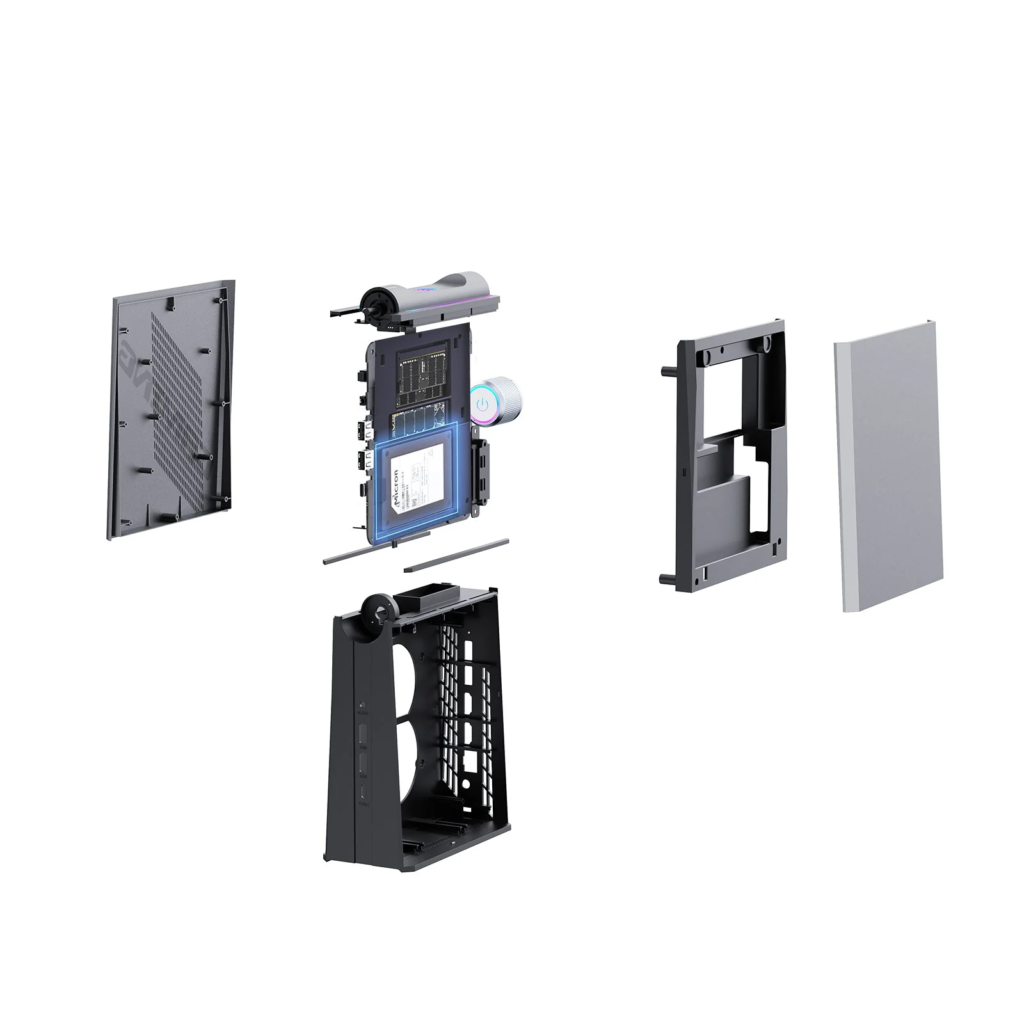
With 20 PCIe lanes to spare, it explains why all the USB ports offer 10Gbit/s of bandwidth, making this unit ideal for connecting to a USB-C docking station. Nevertheless, since the machine is likely to remain on the desktop, the added hardware in the AD08 may offer little benefit.
One recommended accessory is a USB to 2.5GbE LAN adapter, as it significantly outpaces the 1GbE adapter installed by Acemagic and is relatively inexpensive.
One aspect that could have been improved is the M.2 slot.
Despite the available PCIe lanes, this machine only features a PCIe 3.0 M.2 slot, limiting performance to below 4,000 MB/s. To increase internal storage, you can add a single 2.5-inch HDD or SSD, potentially useful for upgrading beyond the included 512GB system drive.
Features: 4 / 5
ACEMAGIC AD08: Performance
- Unique processor
- Subpar GPU
- Limited to PCIe 3.0 NVMe
Benchmarks:
Here are the benchmark results for the Acemagic AD08:
- 3DMark Wild Life: 6135; Fire Strike: 2387; Time Spy: 786
- Cinebench R23 CPU points: 1584 (single-core); 9619 (multi-core)
- GeekBench 5: 1663 (single-core); 8215 (multi-core), 8139 (OpenCL)
- CrystalDiskMark: Sequential Read: 3450MB/s; Sequential Write: 2699 MB/s
- PCMark 10 (Office Test): 5114
- Windows Experience Index: 8.1
We could describe this CPU, boasting eight cores and sixteen threads, as excellent for general office tasks, which it can be. However, this assessment overlooks the significant shortcomings of Intel’s 10th and 11th Gen processors, including the Core i9-11900H, which doesn’t live up to its on-paper promises.
This chip originated from an earlier design where Intel didn’t segregate cores into performance and efficiency modules. While it boasts eight cores, all with hyperthreading, in practice, it behaves as if it has eight cores without hyperthreading. This results in multi-threaded performance that’s nearly half that of a single core, rendering hyperthreading largely ineffective.
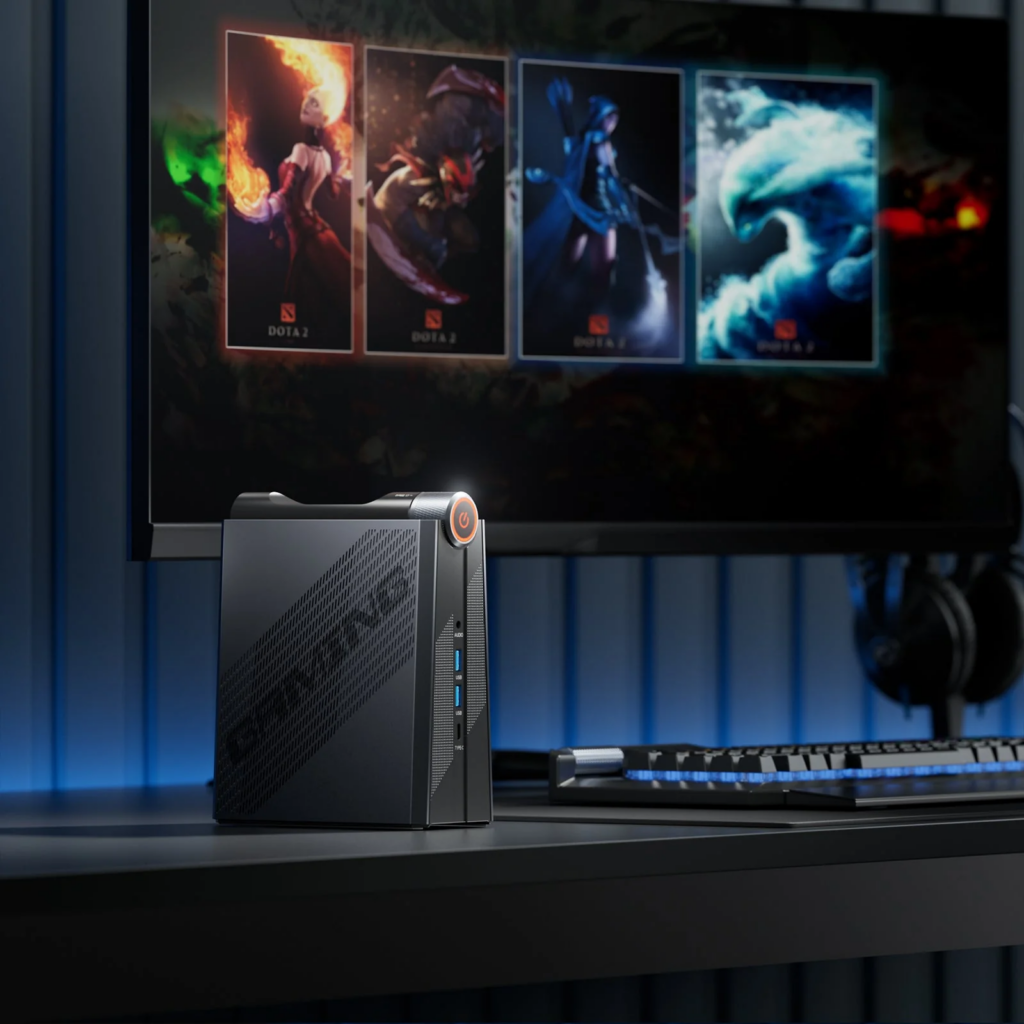
The Core i9-11900H’s biggest drawback is its pairing with a UHD Graphics GPU, likely due to space constraints on the die that couldn’t accommodate the Iris Xe GPU.
This creates an imbalanced configuration where the CPU’s potential power is constrained by the tiny graphics engine.
For those considering the AMD AM08 Pro version, a decisive factor can be found in the 3DMark Time Spy scores. The AD08 lags significantly with a score of only 786, while the Geekom AS 6, featuring the same 6900HX processor and GPU as the AM08 Pro, achieves 2571—a 327% improvement.
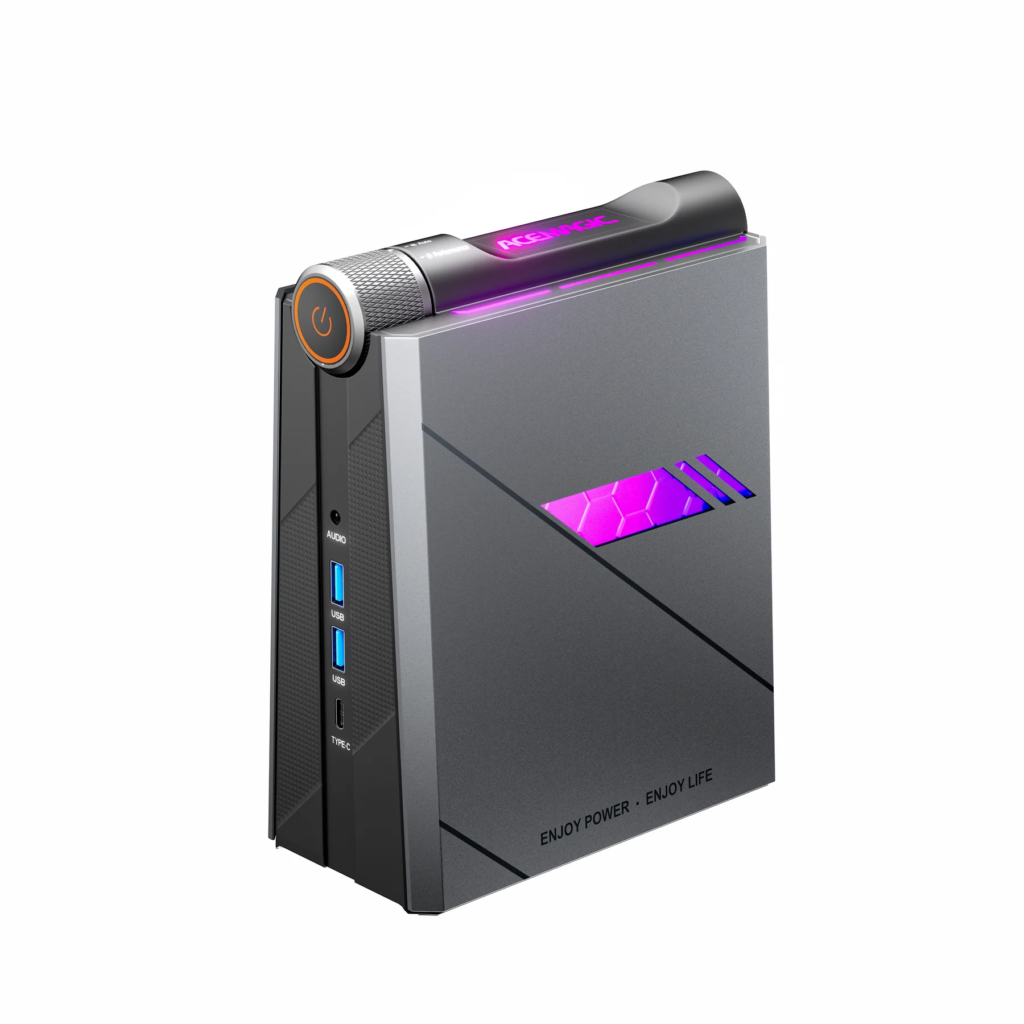
Even a recent Core i7 mobile CPU with the Iris Xe GPU outperforms the AD08 with a score of 1944, nearly triple the performance.
Overall, the silicon in this mini-PC has aged poorly, and we strongly recommend opting for the AMD Ryzen version, which is also more cost-effective.
Performance: 3 / 5
It’s worth noting that when Intel originally launched the Core i9-11900H processor, it was priced at $599—just slightly less than the cost of the entire AD08 machine.
Since 2020, Intel has made significant advancements in design, producing more power-efficient CPUs that can boost clock speeds without overheating. However, the real Achilles’ heel of this platform is the GPU, which falls short compared to Intel’s Iris Xe or AMD’s Radeon 680M alternatives.
In essence, the AD08 represents a situation where the CPU’s processing power is frustratingly constrained by the limitations of a lackluster GPU.
While the structure of this desktop system is generally sound, unless you require VESA mounting, we strongly recommend choosing the AMD AD08 Pro with its Ryzen 9 CPU, offering a notably superior experience.
ACEMAGIC AD08: Report Card
- Value: The Intel version of this machine is relatively expensive given its performance. (3 / 5)
- Design: Unconventional design with convenient internal access. (4 / 5)
- Features: Abundant USB ports and some expansion options, but limited to 1GbE LAN. (4 / 5)
- Performance: Lackluster GPU and suboptimal hyperthreading on the CPU. (3 / 5)
- Total: A compelling case for choosing the AMD version of the same machine. (3.5 / 5)
Should You Buy an ACEMAGIC AD08?
Buy it if…
- You have a strong preference for Intel.
- Portability is a key consideration for you, as the AD08 is sufficiently compact for on-the-go presentations, especially with expanded storage capacity.
Don’t buy it if…
- You require a discrete GPU for tasks such as gaming or CAD work, which isn’t possible with this NUC-style enclosure.
- You intend to use this PC for gaming, as the Core i9 CPU in this machine, while not lacking in power, falls short of newer processors due to its older fabrication and inferior GPU. Opt for the AMD AD08 Pro instead, which offers a superior experience.

Leave a Reply